Take My Money: A New Age of POS
It’s super frustrating to be in line to pay for something after I’ve decided what I want. I’ve always believed that when someone is taking my money for something they want me to buy they have the responsibility to take it as fast as I want to give it to them.
This applies at a festival, a fair, online and in any store yours not exempt. This probably doesn’t surprise you if you’re like most Americans. Our expectations and impatience are intertwined with a high-speed sense of value. I barely remember dial up or DSL. T-1, cable and fiber-optic are barely fast enough.
Next to the prices that are charged, the speed with which a merchant takes the customers’ money has the greatest impact on their ability to increase sales and profits. The point-of-sale (POS) process can be the biggest limiting factor on how quickly transactions are processed.
Clunky systems, although computerized, are not only slow, but also irritating to the customer. That means that they are costly to the merchant even if they are paid for.
This cost I’m speaking of is the opportunity cost of the money you are not receiving because you’re too slow.
But when do we, and other consumers, choose not to enter the line altogether? When the merchant doesn’t accept our form of payment we’re an invisible statistic, one they should perhaps be more concerned about than visible sales dollars.
I’m warning you that the rest of this article will challenge some assumptions we’ve all been told to make about computer POS systems and accepting payment from customers.
It’s going to challenge your mindset about “just a few hours on a few days” when your checkout lines are long and your parking lot is full.
It’s going to challenge your mindset about accepting forms of payment you may not have even heard about yet.
What makes the checkout process painful or painless for the customer?
1. Waiting in line Painful
A long wait in line accompanies a long memory.
We all subconsciously or consciously go through a memory cycle about our last experience with a merchant when deciding if we will return there.
Were they open? Did I find a parking space? Did they have what I wanted? Could they answer my questions? Was the value fair for the price? Was the line long? Did it take too long? Did they follow through?
The answers to these questions may tell us why some of them are not coming back. But let’s say they were satisfied or that we have something they can’t get anywhere else regardless of the price or how bad our service may be.
Then there’s the merchant’s point of view. At peak times of business when a customer is waiting in line, their car is in your valuable parking space.
The opportunity of a little add-on sale at the register is more of an annoyance to the customer these days, and it adds to the time the customer is in your parking lot. This translates into money you don’t get from the next customer. Add on to the original sale by proactively selling. That’s where the real money is.
2. Waiting for the order to be rung Painful
I’ve been known to say that POS systems are the biggest waste of time in the garden center business.
This is because so many of them encumber the process of getting paid with little to no benefit from the effort of collecting data.
Just because you can collect data with a POS system doesn’t mean you should. If you’re not going to figure out how to use the data to actually improve your business, then the whole process of preparing to collect it and collecting it is for naught. Data for data’s sake doesn’t pay the bills.
Let’s get smart data beginning with how we’ll actually use it, then how we’ll collect it.
I know of one garden center that pushed over $30,000 through per each of their four registers on the Saturday before Mother’s Day with only 50 parking spaces metering customers into the store.
The super-fast processing begins with understanding how you’ll actually use the data.
This retailer figured out that most of the information they needed to manage inventory was in their growing systems. They knew how much of what they planted and what was thrown out.
They asked other retailers and found that most gathered all sorts and sundry data, but actually made the next year’s inventory decisions from their growing data. For the product they bought in, the primary data source was vendor-provided records. This being the case, they streamlined their bar-coded SKU’s to maximize throughput.
Some would argue that they missed opportunity to charge more for higher value items. They argue that they did that and more as margins and profits rose dramatically from the move.
There were a couple of additional improvements made such as building Costco-style checkout counters that allowed them to separate their customers from their purchases, which allowed the cashier to take control of the speed of product flow.
New and faster checkout computers solved another bottleneck and also made their super speedy cashiers happier. Turns out that the cashiers were working faster than the processors in their PC-based POS system, which meant they were waiting for the computer to catch up to enter their next keystrokes.
The new computers were able to keep up with touch-screen-enabled cashiers who can now check customers out as quickly as they can text message.
3. Line busting mobile payment systems Painless
Perhaps one of the silliest reasons for a customer to be in a checkout line is when a salesperson has already tallied up their order and sent them there for payment.
Today we have all sorts of available options for checking out customers on the fly from wherever they or we are located at home with their computer, in the sales yard or through the now old-fashioned line at the register.
Tablet- or smartphone-based terminals are connected wirelessly to POS. If your old clunky POS hasn’t mastered this already, it may be time to move upward and onward to newer systems designed for mobile systems from the start.
4. Integrating payment systems with POS Painless
This is one of the latest and biggest trends of better retailing since the invention of the cash register.
Many retailers are now familiar with Square (www.squareup.com), GoPayments from Intuit (Quickbooks) and PayPal Here (www.paypal.com).
While processing credit and debit payments through Internet-connected terminals is not at all new, the process is being revolutionized thanks to Cloud computing.
Big and small banks are now firmly rooted in the POS/payment business reselling systems such as Clover from First Data (www.clover.com).
Wells Fargo’s Total Merchant Services now offers Groovv (www.groovv.com) system promising a flat credit card processing fee of only 1.59 percent plus 19 cents per transaction.
Then there’s Fifth Third Bank’s venture with National Payment Systems.
Beware of banks and other profit-taking credit card payment processing companies that accuse these new competitors of non-compliance with legally required payment security.
They wouldn’t be able to be in business if this were true and nobody is blameless when it comes to payment security these days.
5. Integrated currencies Painless
Within the financial industry there is a lot of sorting out to be done to determine how this will all work, but the acceptance of alternate currencies is well underway.
Think of this as the modern-day version of the Sony BetaMax and VCR debate but more of a win-win like the Apple and Microsoft Office solution.
There are two levels of alternative currency, and this is the most basic first step integrating existing bank and credit accounts with systems like Apple Pay, Google Wallet, etc. Then there’s the true alternative currency.
6. Alternate currencies Painless well maybe not yet
Many people are choosing to avoid the traditional banking systems for a variety of reasons.
Cash is still the most reliable and secure payment method but who carries that anymore? It’s like safe sex versus abstinence. All other payment systems have inherent risks of 1’s and O’s moving through cyberspace, and it is now commonly accepted that fraud and theft will occur within them.
Regulation of alternate currencies is being developed after their acceptance in certain circles of society. Bitcoin, and other currencies of fluctuating value, present greater risks.
Alternative transferring of accepted currencies like the U.S. Dollar through systems like Dwolla carry less risk to the value of the currency.
So just when you thought you had enough challenge competing with big boxes and online retail, the way you take payment and the form of payments you take are challenged and become a differentiating factor in the consumer’s choice of where to buy.
Will you choose for them, or will you give them the choice? Choice is what capitalism is all about so embrace it, but keep a cigar box filled with an order pad, pen and solar calculator under the counter just in case the Internet doesn’t work tomorrow.







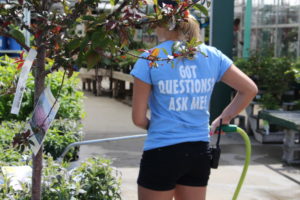

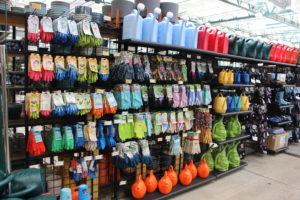
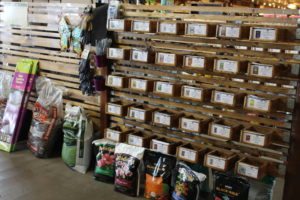
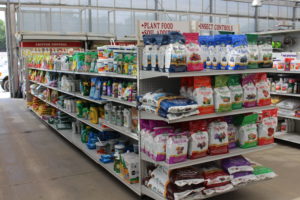





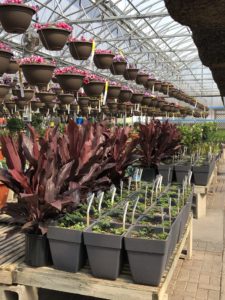
 Videos
Videos





